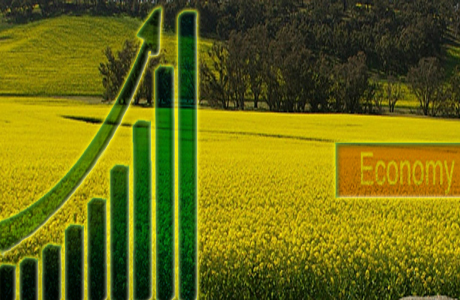Economy not out of woods yet
By
Imran Maqbool
 Following
recent review of the Pakistan’s economy by the International
Monetary Fund and the subsequent release of $505 million
under the Standby Arrangement.
Following
recent review of the Pakistan’s economy by the International
Monetary Fund and the subsequent release of $505 million
under the Standby Arrangement.
The federal government
boosted about economic performance since it came to power in
mid last year.
Government functionaries
and like-minded economic analysts are bullish on future
outlook of the country’s economic prospects.
And these bullish
sentiments were also seen on the capital markets as the
Karachi stock market’s key index is trading at record high
level as these lines are being written.
But in this euphoria, we are
overlooking underlying weaknesses of the economy which, if
not addressed through structural reforms, could weigh on
future growth prospects.
Today, the Asian Development Bank in its annual economic
publication – Asian Development Outlook 2014 – talked about
the same dangers.
The report says that achieving fiscal sustainability is a
major recurring challenge for policy makers in Pakistan.
“Fiscal discipline has eroded in recent years with the
persistent need to finance expanding energy sector
subsidies, growing losses incurred by state-owned
enterprises, and high.expenditures for security,” it says.
As a result, the report
points out that domestic portion of public debt increased
sharply for the second year in a row, from 38.0% of GDP at
the end of FY2012 to 41.5% in fiscal year 2013, to finance
high fiscal deficits.
Foreign debt fell by 4.6% of
GDP in FY2013, mainly as IMF debt was repaid.
Total public debt (including
external liabilities) at the end of FY2013 amounted to 63.3%
of GDP, exceeding the legal limit of 60% set under the
Fiscal Responsibility Debt Limitation Act, 2005.
ADB stresses that structural reforms to widen the revenue
base are, however, critical for restoring fiscal
sustainability.
These include improving tax
administration, eliminating exemptions to certain sectors,
and bringing all sectors including agriculture under the tax
net.
Efforts would be required
from federal and provincial governments alike, as some taxes
(notably on agriculture) fall under provincial
administration and reforms would help enhance their own
revenues.
Currently, over 90% of
provincial revenues are transfers of federal shared taxes.
As provinces have assumed a greater share of federal
resources and spending responsibilities through devolution,
their fiscal performance has become even more important in
relation to the national fiscal outcomes.
For instance, collecting
sales tax on services is now a provincial government
responsibility, and most social sector responsibilities have
been transferred to provinces.
Clearly, the allocation of 57.7% of the national shared tax
base to provinces determined under the 2010 National Finance
Commission award requires greater fiscal prudence and
discipline on the part of the provinces.
A mechanism to ensure
provincial fiscal discipline is likely to be a crucial
consideration in upcoming discussions for the 2015 award.
Modest Growth
Unlike others, the ADB report is not so bullish over GDP
growth prospects. It forecasts GDP growth of only 3.4
percent for the current 2014 fiscal year – lower than what
we achieved last year and more importantly below official
estimates of 4-4.5 percent.
It says agriculture is expected to be weaker due to a drop
in cotton output, which partly oÁset the improvement in
sugarcane and rice crops.
Ongoing rains, however, may
benefit the upcoming wheat crop, despite a reduction in the
sowing area this year.
Weak agriculture will be partly compensated by the pickup in
large-scale manufacturing, which grew by 6.7% during the
first 6.months of FY2014, three times the rate during the
same period a year earlier, the report says.
More importantly, inflation is also not likely to ease
substantially this year as well.
The reports says that Average
consumer price inflation is projected at 9.0% in fiscal year
2014 and 9.2% in fiscal year 2015.
After going through the ADB report, one can safely assume
that not all is good on the economic front.
The government needs to
tighten its belt to reduce fiscal deficit, introduce policy
initiatives to spur foreign inflows,
restructure tax regime so that the available fiscal space is
used to give relief to the masses as providing mere 1.72 per
litre relief to the general public on petrol is simply not
enough.
April, 2014
Source:
Samaa News